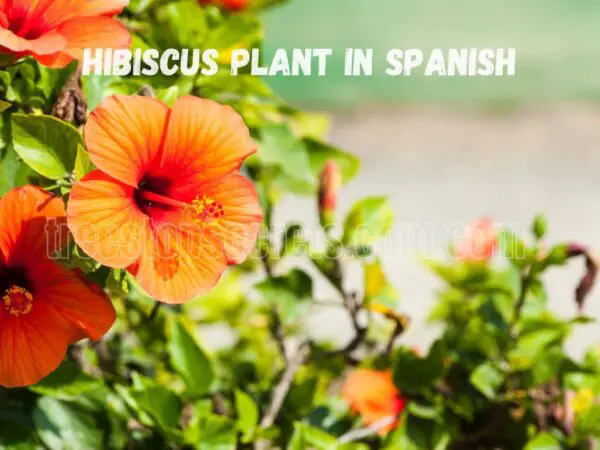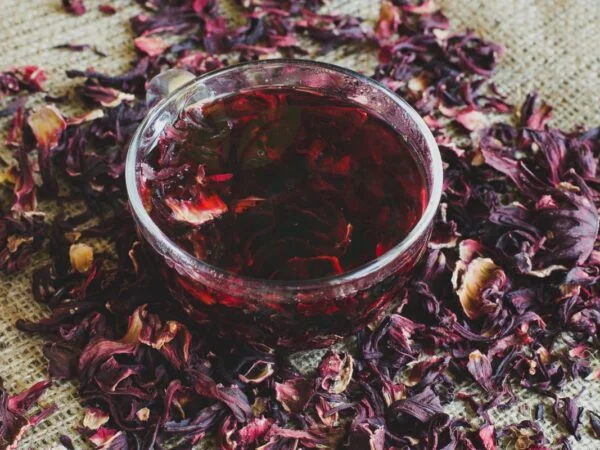Wondering how tall hibiscus trees can grow? Hibiscus trees, known for their vibrant flowers and lush foliage, can reach impressive heights under the right conditions. If you're curious about the potential height of these tropical beauties, you've come to the right place.
Hibiscus trees typically grow between 8 to 15 feet tall, depending on the variety and care they receive. Factors like sunlight, soil quality, and pruning techniques play a crucial role in determining their ultimate height. Stay tuned to discover essential tips on nurturing hibiscus trees for optimal growth and stunning blooms.
Key Takeaways
-
Hibiscus trees can grow up to 15 feet tall, so consider this when planting them in your garden.
-
To enhance growth, provide hibiscus trees with well-draining soil, ample sunlight, and regular watering.
-
Common issues like pests and diseases can hinder growth, so monitor your hibiscus tree regularly for any signs of trouble.
-
Pruning and fertilizing can promote maximum height in hibiscus trees, encouraging healthy growth.
-
If facing growth challenges, such as stunted development, adjust care routines or seek professional advice.
-
Selecting the right hibiscus variety suited to your climate and space can contribute to achieving optimal height for your tree.
Hibiscus Tree Overview
Growth Potential
Hibiscus trees can grow up to 15 feet tall and spread out about 6 feet wide. They reach their maximum growth potential within a few years, typically around 3-5 years after planting. The height of hibiscus trees is significantly influenced by factors like sunlight, water, soil quality, and pruning practices.
Varieties
There are various varieties of hibiscus trees, including the tropical hibiscus with its large, colorful flowers and the hardy hibiscus known for its cold tolerance. Each variety has unique characteristics in terms of flower size, color, shape, and foliage. Some popular colors of hibiscus flowers include red, pink, yellow, orange, and white.
Zones
Hibiscus trees thrive best in climate zones ranging from USDA zones 9 to 11 where temperatures stay above freezing. Extreme cold can damage or kill hibiscus trees, so it's crucial to bring them indoors during frosty weather. Temperature fluctuations can impact the growth and blooming cycle of hibiscus trees; therefore, monitoring weather conditions is essential for their well-being.
Planting Hibiscus Trees
Ground Techniques
Plant perennial hibiscus by digging a hole twice as wide but not deeper than the root ball. Ensure the hibiscuses are planted at the same depth as they were in their nursery pots. Water thoroughly after planting to help establish the roots.
l quality is crucial for hibiscus tree growth. Opt for well-draining soil rich in organic matter. A pH level between 6.0 and 7.5 is ideal for hibiscus trees to thrive. Regularly check and maintain soil moisture levels.
Prepare the ground by clearing weeds and debris before planting your hibiscus trees. Incorporate compost or fertilizer into the soil to provide essential nutrients for healthy growth. Mulch around the base of the tree to retain moisture and suppress weed growth.
Pot Guidelines
When planting hibiscus trees in pots, choose a container that is at least 18 inches in diameter with drainage holes at the bottom. The pot's size directly impacts the plant's growth, so ensure it has enough space for root development.
Selecting the right type of pot is vital for hibiscus tree health. Opt for plastic or ceramic pots that retain moisture better than terracotta ones. This helps regulate soil moisture levels and prevents waterlogged roots, promoting overall plant well-being.
Ensure proper drainage in the pot to prevent waterlogging, which can lead to root rot in hibiscus trees. Use a well-draining potting mix specifically formulated for flowering plants like hibiscus to provide adequate nutrients and support healthy growth.
Hibiscus Care Essentials
Light Needs
To ensure healthy hibiscus tree growth, provide adequate sunlight. Sun exposure impacts hibiscus tree development significantly.
Soil Requirements
For optimal growth, hibiscus trees need specific soil conditions. The ideal pH level for hibiscus tree soil is crucial. Well-draining soil is essential for hibiscus tree health.
Watering Tips
Proper hydration is vital for hibiscus tree growth. Avoid overwatering or underwatering to maintain the ideal moisture level.
Fertilization Practices
Choose the best fertilizer to promote hibiscus tree growth effectively. Nutrients play a significant role in supporting hibiscus trees' development.
Enhancing Growth
Temperature Control
Maintaining optimal temperatures is crucial for the health of hibiscus trees, ensuring they thrive. Extreme heat can lead to wilting and stress, while cold snaps may cause damage.
To protect hibiscus trees from temperature fluctuations, consider shading during intense heat and using mulch to insulate roots in cold weather. Regularly monitor temperatures to adjust care accordingly.
Annual Maintenance
Essential annual maintenance tasks for hibiscus trees include pruning, which promotes new growth and enhances overall appearance. Trimming helps maintain a balanced shape while removing dead or diseased branches.
Regular maintenance is key to promoting healthy growth, with tasks like fertilizing, watering, and monitoring for pests. Through proper care, hibiscus trees can flourish and bloom abundantly.
Common Hibiscus Issues
Mealybugs
Mealybugs are common pests that can harm hibiscus trees, sucking sap and causing yellowing leaves. Detect them by their white, cotton-like clusters on stems and leaves. To control mealybugs, prune affected areas and apply insecticidal soap or neem oil. For a natural approach, introduce beneficial insects like ladybugs.
Yellow Leaves
Yellow leaves on hibiscus trees indicate issues such as overwatering, nutrient deficiencies, or pests. Ensure proper watering practices and feed with a balanced fertilizer to address nutrient deficiencies. Treat pests promptly to prevent leaf discoloration. Mulching around the base of the tree aids in moisture retention and soil health.
Powdery Mildew
Powdery mildew is a fungal disease that appears as white, powdery spots on hibiscus leaves. Prevent it by ensuring good air circulation around the plant and avoiding overhead watering. Treat mildew with a fungicidal spray or a mixture of water and baking soda. Prune infected foliage to reduce spread and promote plant recovery.
Rust Problems
Rust problems in hibiscus trees manifest as orange-brown spots on leaves, leading to leaf drop and stunted growth. Improve air circulation by spacing plants adequately to prevent rust development. Treat rust with fungicides specifically formulated for rust diseases. Regularly remove fallen leaves to prevent reinfection.
Promoting Maximum Height
Proper Planting
Plant hibiscus trees in well-draining soil to prevent waterlogging, ensuring healthy root development. Adequate sunlight is crucial for optimal growth. Spacing them at least three feet apart allows ample room for each tree to flourish. When planting, ensure the root ball is level with the soil surface to promote stability.
To guarantee successful root establishment, water hibiscus trees deeply but infrequently. This practice encourages roots to grow deeper into the soil, providing better anchorage during windy conditions. Mulching around the base of the tree helps retain moisture and regulates soil temperature, promoting overall plant health.
Optimal Care
Providing optimal care involves regular watering, especially during dry spells, to maintain adequate moisture levels. Fertilize hibiscus trees monthly during the growing season with a balanced fertilizer high in potassium to encourage flowering and overall vigor. Pruning dead or overgrown branches promotes air circulation and new growth.
Consistent care routines are essential for maintaining hibiscus tree health. Monitor for pests like aphids and spider mites regularly, addressing any infestations promptly to prevent damage. Consider applying a layer of organic compost annually to enrich the soil and provide essential nutrients for robust growth.
Creating an ideal environment for hibiscus tree growth includes protecting them from harsh winds that can damage delicate branches and flowers. Consider using stakes or supportive structures if necessary. Regularly inspect the leaves for signs of nutrient deficiencies such as yellowing or stunted growth, adjusting fertilization accordingly.
Addressing Growth Challenges
Pest Management
Pests like aphids and spider mites can harm hibiscus trees by feeding on their sap. These pests weaken the plant and cause yellowing leaves.
To protect hibiscus trees, regularly inspect them for signs of pest infestation such as distorted leaves or webbing. Introduce beneficial insects like ladybugs to naturally control aphids.
Chemical solutions like neem oil or insecticidal soap effectively combat pests while minimizing harm to the environment.
Disease Prevention
Preventing diseases in hibiscus trees is crucial for their overall health and growth. Common diseases include powdery mildew and leaf spot, which can stunt growth and reduce flowering.
Identify diseases early by looking for symptoms like white powdery patches on leaves or dark spots. Remove infected plant parts promptly to prevent disease spread.
Maintain good air circulation around the tree, avoid overhead watering, and apply fungicides preventively to keep hibiscus trees disease-free.
Selecting the Right Variety
Species Differences
Hibiscus trees come in various species, each with unique traits. Some species are known for their vibrant flowers, while others are prized for their large size. Understanding these differences is crucial for proper care and maintenance. Each species has specific growth patterns and requirements that can significantly impact how tall they grow. For example, the Hibiscus rosa-sinensis species typically grows taller than other varieties due to its genetic makeup. By familiarizing yourself with the distinct characteristics of different hibiscus tree species, you can better anticipate their growth potential and provide tailored care.
Cultivar Heights
When selecting hibiscus tree cultivars, it's essential to consider how they influence the tree's height. Cultivars play a significant role in determining the ultimate size of your hibiscus tree. Some cultivars are specifically bred to reach impressive heights, catering to those seeking a large size hibiscus tree as a focal point in their garden or landscape. On the other hand, certain cultivars are more compact, ideal for smaller spaces or container gardening. By researching and understanding the varying heights associated with different hibiscus tree cultivars, you can make an informed decision based on your preferences and available space.
Closing Thoughts
In growing hibiscus trees, you've learned about their care, challenges, and maximizing height potential. By selecting the right variety and following essential care tips, you can enhance growth and address common issues effectively. Remember to promote healthy growth by providing adequate sunlight, water, and nutrients while monitoring for pests and diseases. Your efforts will pay off with vibrant blooms and lush foliage that showcase your gardening skills.
Now, take action! Apply the knowledge gained to nurture your hibiscus trees to their full potential. Share your success with others and continue exploring ways to improve your gardening techniques. With dedication and proper care, you'll enjoy beautiful hibiscus trees that stand tall in your garden for years to come.
Frequently Asked Questions
How tall do hibiscus trees typically grow?
Hibiscus trees can reach varying heights depending on the species and growing conditions. On average, they can grow between 6 to 12 feet tall, but some varieties may exceed this height under optimal care.
Can I enhance the growth of my hibiscus tree?
Yes, you can promote growth by providing adequate sunlight, water, and nutrients. Pruning, fertilizing with a balanced formula, and ensuring proper drainage can also help stimulate healthy growth in your hibiscus tree.
What are common issues that affect hibiscus tree growth?
Common issues include pests like aphids or spider mites, diseases such as powdery mildew, overwatering leading to root rot, nutrient deficiencies, and inadequate sunlight. Addressing these issues promptly can support optimal growth for your hibiscus tree.
How can I select the right variety of hibiscus tree for maximum height?
When selecting a hibiscus variety for maximum height, consider factors like the climate in your region, available space for growth, desired flower color and size, and specific care requirements. Consult with local nurseries or gardening experts for guidance on choosing the best variety.
What are some challenges in achieving maximum height for hibiscus trees?
Challenges may include unsuitable growing conditions like poor soil quality or insufficient sunlight, incorrect pruning techniques hindering growth, pest infestations impacting plant health, and improper watering practices. Overcoming these challenges through proper care and maintenance is essential for maximizing the height of your hibiscus tree.
Image Source: Paid image from CANVA




